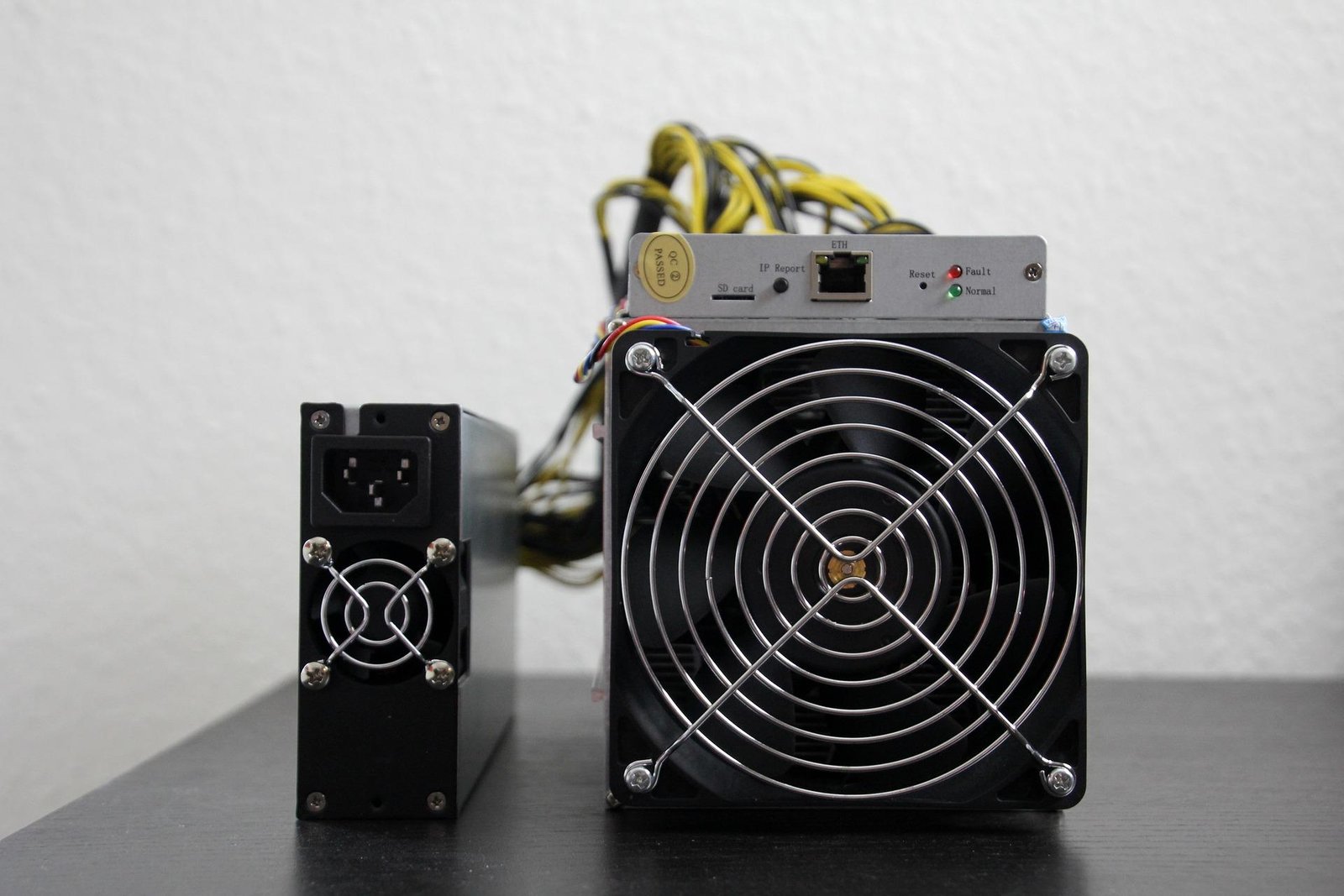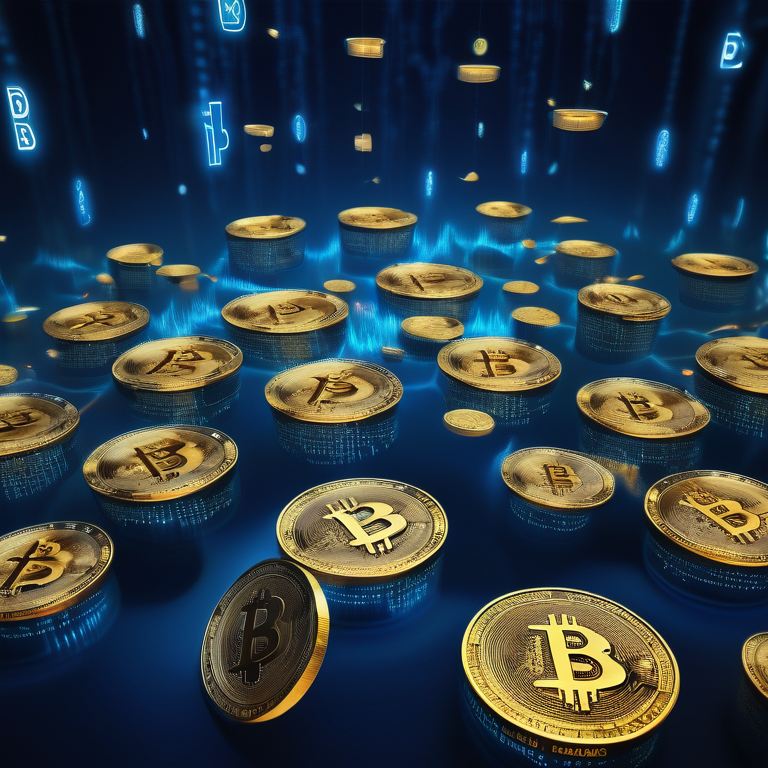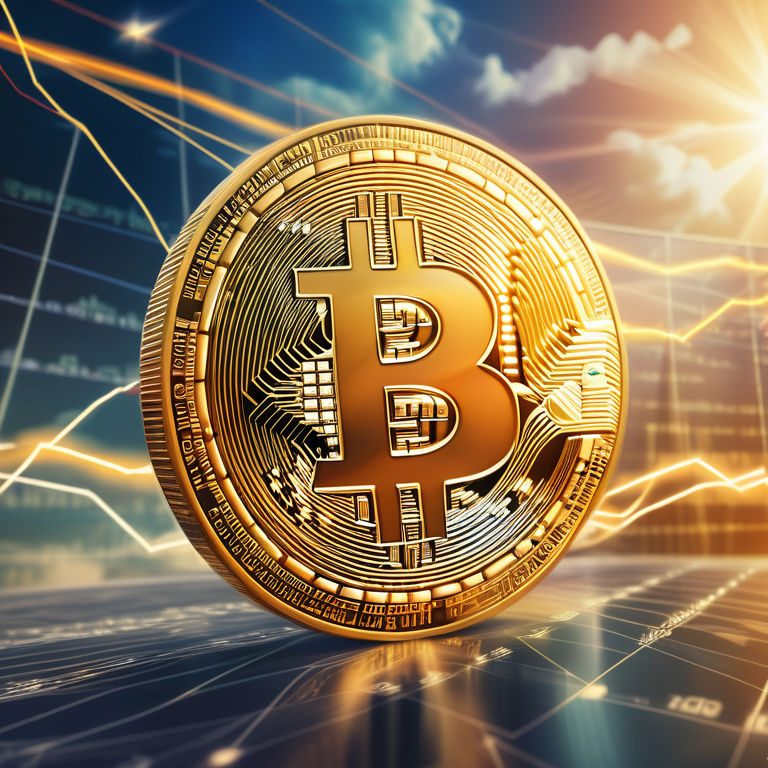Bitcoin
Part 1 – Amazingly positive things about bitcoin mining riches.
How many Bitcoin is left?

Mining is the process by which transactions are verified and added to the public ledger, known as the blockchain, and also the means through which new bitcoin are released. Anyone with access to the internet and suitable hardware can participate in mining. The mining process involves compiling recent transactions into blocks and trying to solve a computationally difficult puzzle. The participant who first solves the puzzle gets to place the next block on the blockchain, thus receiving newly released bitcoin.
The first miner is rewarded with newly created bitcoins and transaction fees from every block solved thereafter. As more people mine for bitcoins, it becomes increasingly difficult for each miner to solve puzzles and earn bitcoin rewards.
—Bitcoin news
Mining is the process of adding transaction records of coin’s public ledger of past transactions. This is done by solving a computationally difficult puzzle, which takes a lot of time and computing power.
mining is the process by which transactions are verified and added to the public ledger, known as the blockchain. The mining process involves compiling recent transactions into blocks, which are then added to the blockchain one by one in chronological order.
Mining is competitive and it doesn’t come cheap either. It requires an investment in expensive hardware that consumes large quantities of electricity and generates tons of heat in the process.
—
mining is the process by which transactions are verified and added to the public ledger, known as the blockchain. It’s called mining because it resembles a gold miner panning for gold.
The first transaction recorded in a block is called the genesis block. As more transactions are made, they’re added to the chain and each block becomes more difficult to solve than the one before it.
—
mining is the process by which new bitcoins are generated.
Mining involves solving a difficult mathematical problem to find a number that the network accepts as an answer. As more miners try to mine for bitcoins, the difficulty of mining increases, meaning it takes more time and energy to mine for bitcoins.
—
the coin is a type of cryptocurrency, which is created and held electronically and mining is the process of adding transactions to the blockchain.
the process by which transactions are verified and added to the public ledger, known as the block chain. The miner who solves each block receives an award consisting of new coins and transaction fees from every bitcoin exchange transaction that has happened in the last ten minutes.
—
mining can be done by anyone with access to the internet and the proper hardware. In order to do bitcoin mining, you will need a Bitcoin wallet, which acts as your personal bank account so that you can send and receive bitcoins.
Bitcoin wallet the best recommended here as follows:
Trezor Model One – Crypto Hardware Wallet – The Most Trusted Cold Storage for Bitcoin, Ethereum, ERC20 and Many More (Black)
Also mining is the process of adding records of transactions to a public ledger called the blockchain. miners are rewarded for their efforts with new coin.
The blockchain is a public ledger that records all bitcoin transactions. The blockchain is shared and maintained by a distributed network of computers around the world, meaning that there’s no central record-keeper or authority to oversee it.
—
mining is also the process of solving complex mathematical equations to validate transactions in a block, which is then added to the blockchain.
mining can be done by anyone. The only requirements are a computer and internet connection. This tutorial will teach you how bitcoin mining works, what it does, and whether or not you should do it.
— therefore mining is a process in which transactions are verified and added to the public ledger, known as the blockchain.
and it is a process in which transactions are verified and added to the public ledger, known as the blockchain. Bitcoin miners verify transactions on bitcoin’s blockchain by solving complex mathematical problems.
The network shares a public ledger called the “block chain”. This ledger contains every transaction ever processed, allowing a user’s computer to verify the validity of each transaction. The authenticity of each transaction is protected by digital signatures corresponding to the sending addresses, allowing all users to have full control over sending bitcoins from their own bitcoin addresses.
—
Generally mining is the process by which transactions are verified and added to the public ledger, known as the blockchain.
mining is a computationally intensive process that has been designed to be so difficult that it requires a lot of computing power.
The more computing power you have, the higher your chance of solving this puzzle and earning bitcoins.
—
This process is called mining because it resembles gold mining in some ways. The miners, who verify transactions, are rewarded with new coins for their work.
so mining is a computationally intensive process that requires a lot of electricity and processing power.
mining software listens for transactions broadcast through the peer-to-peer network and performs appropriate tasks to process and confirm these transactions. miners perform this work because they can earn transaction fees paid by users for faster transaction processing, and newly created coins issued into existence according to a fixed formula.
—
The mining is the process of adding transaction records to coin’s public ledger of past transactions. This ledger of past transactions is called the block chain as it is a chain of blocks. The block chain serves to confirm transactions to the rest of the network as having taken place. coin nodes use the blockchain to distinguish legitimate the transactions from attempts to re-spend coins that have already been spent elsewhere.
mining involves three steps:
1) A miner finds a new block (a group of bitcoin transactions).
2) The miner adds a so-called coinbase transaction (the current bitcoin owner’s address and some extra data).
3) The miner solves the cryptographic puzzle using brute force and finds out if they are successful by checking if their answer matches that on an online blockchain explorer.
If they are successful, they will get 12.5 bitcoins for their work, which will be added to their account balance in order for them to spend it
—
This is a process that requires an immense amount of computational power, so it can be difficult for a single person to mine bitcoin alone. Mining pools are groups of bitcoin miners that work together in order to mine more bitcoins more easily.
—
mining is a process of solving complex math problems to add transactions to the blockchain.
In this post, we will go over the basics of bitcoin mining, top 7 things to remember about bitcoin mining.
1) Mining is a process of solving complex math problems to add transactions to the blockchain.
2) The number of bitcoins awarded for solving each block halves every 4 years until all 21 million bitcoins are mined.
3) mining is not an easy task and requires expensive hardware and electricity costs.
4) miners are rewarded with new bitcoins for their work, as well as a transaction fee from each processed block.
5) miners compete with each other in order to be the first one to solve the math problem and get their block processed by new blocks on the chain.
6) pools allow miners to share processing power while splitting rewards proportionally according
7) Miners can use mining software on their computer which connects them with other
—.
mining is a lot like a giant lottery where you compete with your mining hardware with everyone on the network to earn bitcoins. The more computing power you have, the more chances of earning bitcoins you get.
mining is an important and integral part of the coin that ensures fairness while keeping the coin network stable, safe and secure.
—
The network is a peer-to-peer payment network that operates on a cryptographic protocol. Users send and receive coins, the units of currency, by broadcasting digitally signed messages to the network using cryptocurrency wallet software. Transactions are recorded into a distributed, replicated public database known as the blockchain, with consensus achieved by a proof-of-work system called mining.
Mining is intentionally designed to be resource-intensive and difficult so that the number of blocks found each day by miners remains steady. Individual blocks must contain a proof of work to be considered valid. This proof of work is verified by other Bitcoin nodes each time they receive a block. It uses the hash cash proof-of-work function. The primary purpose of mining is to allow the coin nodes to reach a secure, tamper-resistant consensus. Mining is also the mechanism used to introduce Bitcoins into circulation.
—
A mining rig is a computer system used for mining coins. The rig might be a dedicated miner where it was procured, built and operated specifically for mining or it could be a computer that fills other needs, such as performing as a gaming system, and is used to mine only on a part-time basis.
Mining is an important and integral part of coin that ensures fairness while keeping the coin network stable, safe and secure.
—
It is the process of adding transaction records to the coin’s public ledger of past transactions. It is also the means through which new coins are released.
mining is a lot like a giant lottery where you compete with your mining hardware with everyone on the network to earn bitcoins. Faster the mining hardware is able to attempt more tries per second to win this lottery while the network itself adjusts roughly every two weeks to keep the rate of finding a winning block hash at 12.5 bitcoins per 10 minutes. In the big picture, mining secures transactions that are recorded in the coins public ledger, the block chain. By conducting a random lottery where electricity and specialized equipment are the price of admission, the cost to disrupt the coin network scales with the amount of hashing power that is being spent by all mining participants.
—
The block chain serves to confirm transactions to the rest of the network as having taken place.
mining is a lot like a giant lottery where you compete with your mining hardware with everyone on the network to earn bitcoins. Faster mining hardware is able to attempt more tries per second to win this lottery while the network itself adjusts roughly every two weeks to keep the rate of finding a winning block hash at 6 per hour. In the big picture, Bitcoin mining secures transactions that are recorded in coin’s public ledger, the block chain. By conducting a random lottery where electricity and specialized equipment are the price of admission, the cost to disrupt record-keeping on bitcoin’s blockchain can scale up or down according to demand.
#1: Mining difficulty level increases as more miners join in
—
The top 5 things you should know about bitcoin mining are:
1. The process of adding transaction records to the coin public ledger of past transactions.
2. Mining is a record-keeping service that makes it more difficult for people to make unauthorized changes by making all changes more visible and transparent.
3. Mining can be done by anyone with an internet connection and the appropriate hardware or software, which includes a computer and a special program, or even a smart phone with the right app installed on it
4. To mine , you’ll need to use software that solves mathematical problems (crypto-puzzles). The person who mines gets the new coins as reward for solving these mathematical problems
5. As time goes by, the puzzles become more difficult to solve because they require more computing power (CPU) in order to solve them
—
mining is not a new concept. It’s been around for over 10 years now and has evolved significantly over that period of time.
In this article, we will explore what mining is, how it works, and why it’s important to understand if you are interested in cryptocurrencies or blockchain technology.
—
The transactions are recorded in blocks and each block contains a cryptographic hash of the previous block, linking it to all other blocks in the chain. The more transactions there are on a given network, the more difficult it becomes to produce new coins.
The major reason for mining is that it helps maintain security and stability of our financial system by ensuring that transactions are appropriately validated before they can be confirmed.
— This process is called “mining” because it resembles gold mining in that the bitcoins exist in the protocol’s design (just as the gold exists underground), but they haven’t been brought out into the light yet (just as the gold hasn’t yet been dug up). The miner is rewarded with a certain number of bitcoins for each block mined.
mining has become very popular in recent years, and while most people have heard about it, they may not know what it entails.
In this article we covered some of the basics about mining, as well as some more advanced topics such as how to mine new coin on your own and how to choose a coin mining pool.
—
The first miner to solve the puzzle is rewarded with a set number of new coins, and the miner who solves it first gets to add the next block to the blockchain.
The rewards, however, are only awarded when a new block has been added to the blockchain and for each block mined thereafter. The number of bitcoins generated per block starts at 50 and is halved every 210,000 blocks (about four years). At this point in time, 12.5 bitcoins are generated per block mined.
—
Mining is a process that helps the Bitcoin network function properly.
mining is a process where people use powerful computers to solve complicated math problems. These problems are used to confirm transactions on the coin network and secure them against fraud.
miners are rewarded with new coins for every block they add to the blockchain, which is currently 12.5 bitcoins per block.
—
This process is called “mining” as a reference to the fact that this computer activity takes place below the surface of the earth, in subterranean layers
mining is intentionally designed to be resource-intensive and difficult so that the number of blocks found each day by miners remains steady. Individual blocks must contain a proof-of-work to be considered valid. This proof-of-work (PoW) is verified by other Bitcoin nodes each time they receive a block.
The first miner who solves this problem receives what’s called a “block reward.” The block reward is set at 12.5 bitcoins for solving that problem and includes all transactions that are processed in the block which gives miners their incentive for processing the coin transactions and including them in new blocks.
—
mining is done by a computer and it is a process that gets more complex as time goes on. The complexity of the process increases with the number of miners.
This ledger of past transactions is called the blockchain as it is a chain of blocks. The blockchain serves to confirm transactions to the rest of the network as having taken place. the coin nodes use the blockchain to distinguish legitimate transactions from attempts to re-spend coins that have already been spent elsewhere.
mining can be done by anyone with access to specialized hardware and software, however, not all miners are on a level playing field. As more and more people join in on mining, it becomes increasingly difficult for any one person or organization from controlling half of all bitcoin mining power (known as a “51% attack”).
—
mining is the process of adding transaction records to coin’s public ledger of past transactions. This ledger of past transactions is called the block chain as it is a chain of blocks. The block chain serves to confirm transactions to the rest of the network as having taken place.
mining is intentionally designed to be resource-intensive and difficult so that the number of blocks found each day by miners remains steady. Individual blocks must contain a proof-of-work to be considered valid. This proof-of-work (PoW) is verified by other coin nodes each time they receive a block as the coin uses the hash cash PoW function.
It is a competitive process that involves solving a computationally difficult puzzle. The first participant who solves the puzzle gets to place the next block on the blockchain, and claim its rewards.
mining is a crucial part of the coin’s security model, as it ensures that no one can control who creates blocks or what they contain.
The following link to the article is an interesting one to read bitcoin atm machines.
https://www.coindesk.com/learn/what-you-need-to-know-before-buying-bitcoin-at-an-atm/
You can find a wide variety of suitable bitcoin machines at our site: machine-bitcoin.com listed below :

note : the above article contains affiliate links and offers if you purchase any of the offers our site may receive a commission.




